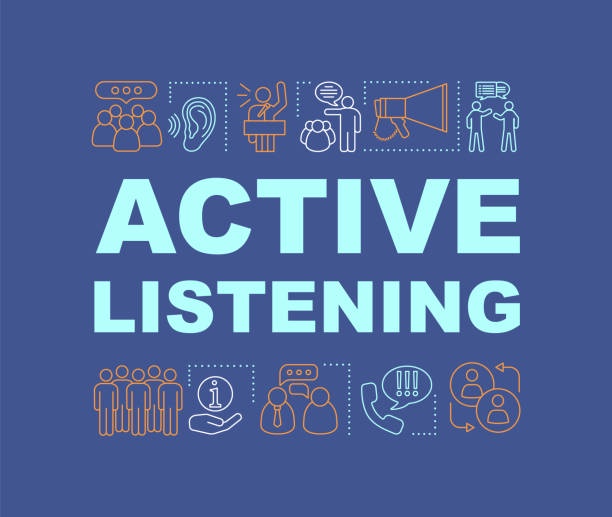Communication, a fundamental aspect of human interaction, has evolved over the years, becoming more complex and nuanced. In this intricate web of conversations, mastering the art of active listening emerges as a crucial skill that transcends personal and professional boundaries. This comprehensive guide will delve into the depths of active listening, exploring active listening techniques, benefits, and practical applications.
Understanding Active Listening
Active listening is more than a passive reception of words; it's a dynamic process that involves fully engaging with the speaker. It requires not just hearing but also interpreting, responding, and remembering the information conveyed. Let's explore the various facets of active listening.
The Core Elements
-
Attentiveness: Active listening starts with being fully present in the moment. Eliminate distractions, focus on the speaker, and show genuine interest in what is being communicated.
-
Non-Verbal Cues: Body language speaks volumes. Maintain eye contact, nod in agreement, and use facial expressions to convey your involvement in the conversation.
-
Responding Appropriately: Provide feedback to the speaker through verbal affirmations, such as "I see," "Go on," or paraphrasing their points. This not only validates their words but also demonstrates your engagement.
Breaking Down Barriers to Active Listening
-
Assumptions and Prejudgments: Clear your mind of preconceived notions. Approach each conversation with an open mind, allowing for a more accurate understanding of the speaker's perspective.
-
Internal Dialogue: Silence the internal chatter. Instead of formulating your response while the other person speaks, focus on absorbing their message. This ensures a more thoughtful and informed reply.
Techniques for Mastering Active Listening
1. Reflective Listening
Paraphrasing or repeating the speaker's words demonstrates not only that you are listening but also that you comprehend their message. This reflective technique fosters a deeper connection and clarifies any potential misunderstandings.
2. Empathetic Listening
Empathy lies at the heart of active listening. Strive to understand the speaker's emotions and perspectives. Acknowledge their feelings, even if you may not agree, creating a space for open and honest dialogue.
3. Asking Clarifying Questions
Don't shy away from seeking clarification. If a point is unclear or ambiguous, ask questions that encourage the speaker to elaborate. This not only enhances your understanding but also demonstrates your commitment to the conversation.
The Transformative Power of Active Listening
1. Building Stronger Relationships
In personal relationships, active listening cultivates trust and intimacy. By truly understanding the thoughts and feelings of others, you create a foundation for meaningful connections.
2. Resolving Conflicts Effectively
Active listening is a potent tool in conflict resolution. By comprehending the underlying issues and validating the concerns of all parties involved, you pave the way for constructive dialogue and resolution.
3. Personal Development
Beyond its interpersonal benefits, active listening contributes to personal growth. By actively engaging with diverse perspectives, you expand your own understanding, fostering a continuous journey of learning and development.
Overcoming Challenges in Active Listening
1. Distractions in the Digital Age
The prevalence of digital devices poses a significant challenge to active listening. To overcome this hurdle, prioritize face-to-face conversations, and implement technology-free zones during critical discussions.
2. Cultural and Language Barriers
In a globalized world, navigating cultural and language differences is essential. Be patient, ask for clarification when needed, and educate yourself about cultural nuances to ensure effective communication.
Applying Active Listening in Everyday Life
1. Enhancing Parent-Child Communication
Parents can strengthen their bond with children by actively listening to their concerns, dreams, and daily experiences. This not only fosters trust but also contributes to a supportive and nurturing environment.
2. Improving Academic Performance
Active active listening and communication is a valuable asset in educational settings. Students who actively engage with lectures, discussions, and study groups are better equipped to grasp and retain information, ultimately enhancing their academic performance.
Conclusion
In a world filled with noise, mastering the art of active listening emerges as a beacon of effective communication. By honing this skill, you not only elevate your personal and professional relationships but also contribute to a more empathetic and interconnected society. Embrace the transformative power of active listening and witness the positive ripple effect it creates in every facet of your life.


No comments yet